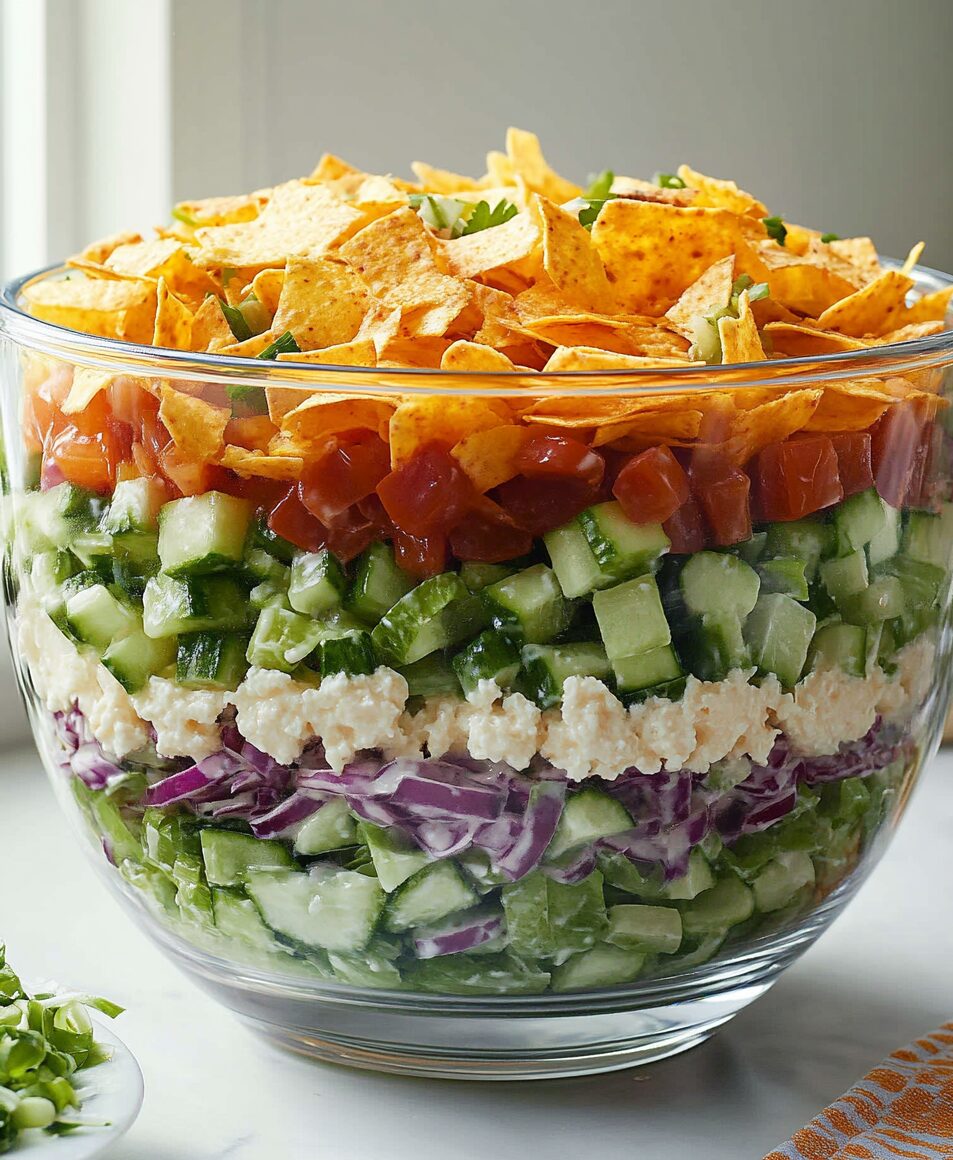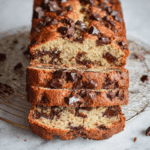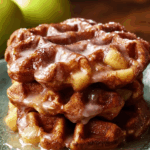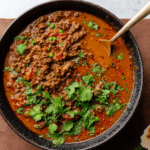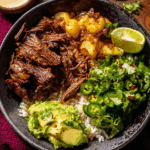This Seven Layer Salad is a visual masterpiece, with layers of colorful vegetables and rich flavors creating a delightful feast for both the eyes and palate. Each layer contributes a unique texture and taste, from the crisp lettuce to the savory bacon bits, ensuring that every bite is a satisfying experience.
Not only is this salad visually stunning, but it’s also incredibly versatile. You can customize the layers with your favorite veggies or add additional proteins, such as grilled chicken or chickpeas, to suit your dietary preferences. Perfect for summer gatherings, potlucks, or a light lunch, this dish guarantees to impress your guests and keep them coming back for more.
Full Recipe:
Ingredients:
- 1 head of lettuce, chopped
- 1 cup celery, chopped
- 1 cup green bell pepper, chopped
- 1 cup frozen peas, thawed
- 1/2 cup green onions, chopped
- 1 cup mayonnaise
- 1 tablespoon white sugar
- 2/3 cup shredded Cheddar cheese
- 1/2 cup cooked and crumbled bacon
- 2 large tomatoes, chopped
- Salt and pepper to taste
Directions:
- Begin by layering the chopped lettuce evenly in a large glass serving bowl. This will form the base of the salad.
- Next, add layers of chopped celery, green bell pepper, and thawed peas, making sure to spread each layer evenly.
- Sprinkle chopped green onions over the peas.
- In a separate small bowl, mix together the mayonnaise and sugar until smooth and well combined.
- Spread the mayonnaise mixture over the green onions layer, covering the salad completely.
- Sprinkle the shredded Cheddar cheese over the mayonnaise layer, followed by the crumbled bacon.
- Top the salad with the chopped tomatoes and season with salt and pepper.
- Cover the salad with plastic wrap and refrigerate for at least 2 hours before serving to allow the flavors to meld together.
Prep Time: 15 minutes | Chill Time: 2 hours | Total Time: 2 hours 15 minutes
Kcal: 320 kcal | Servings: 8 servings
Origin and Tradition:
The Seven Layer Salad embodies the tradition of Southern hospitality and resourcefulness. The concept of layering ingredients in a glass bowl, making each component visible, was not only a visual treat but also a clever way to keep the salad fresh and vibrant for longer periods. The salad’s layered structure also symbolizes abundance, with each ingredient showcasing the bounty of fresh produce available, especially during harvest season.
Over the decades, the salad has been embraced in various forms, often with minor variations based on family traditions and regional preferences. For example, some versions include a hard-boiled egg layer for added protein, while others swap out bacon for ham or use different cheeses. Despite the variations, the basic idea of creating a salad with distinct, complementary layers remains unchanged.
Cooking Tips for the Perfect Seven Layer Salad:
- Choosing the Right Ingredients:
Use fresh, crisp vegetables for the best results. Iceberg lettuce is the most traditional choice due to its crunch, but you can substitute with Romaine or mixed greens. The key is to ensure that each vegetable retains its texture and doesn’t get too soggy. - Proper Layering Technique:
When layering the salad, start with the firmest, most moisture-resistant ingredients like lettuce, celery, and bell peppers at the bottom. This helps prevent the salad from becoming watery. Add softer and smaller items like peas and green onions in the middle, followed by a generous layer of the dressing to seal in the freshness. - Making the Dressing:
The classic dressing is a mixture of mayonnaise and a bit of sugar, which gives the salad a subtle sweetness. If you want to cut down on calories, try using Greek yogurt or a light mayo instead. Adding a splash of vinegar or lemon juice to the dressing can provide a tangy contrast to the sweetness. - Cheese and Bacon Topping:
For the best flavor, use sharp Cheddar cheese, which complements the creamy dressing and adds a savory note. The bacon should be cooked until crispy to provide a nice texture contrast against the creamy and soft layers below. To save time, you can use store-bought bacon bits, but freshly cooked bacon will enhance the flavor significantly. - Chilling Time:
It’s essential to let the salad chill for at least two hours before serving. This allows the flavors to meld together and ensures that the dressing seeps into the layers without making the vegetables soggy. However, try not to let it sit for more than 24 hours to maintain freshness.
Variations to Consider:
- Vegetarian Option:
Skip the bacon and add a layer of diced avocado, hard-boiled eggs, or nuts like sliced almonds or pecans for extra texture and protein. - Healthier Dressing Alternatives:
Use a lighter vinaigrette instead of mayonnaise-based dressing or opt for a combination of Greek yogurt, lemon juice, and fresh herbs. - Additional Layers:
For more texture and flavor, you can add shredded carrots, cucumbers, radishes, or even diced apples for a sweet twist.
How to Serve and Store:
The Seven Layer Salad is traditionally served in a large, clear glass bowl to showcase its beautiful, colorful layers. A trifle bowl or a straight-sided bowl works best to ensure that each layer is visible. Use a long-handled spoon to serve, digging deep to get a bit of each layer in every scoop.
If you’re preparing it in advance, store the salad tightly covered with plastic wrap in the refrigerator. It can keep for up to 3 days, but for the best texture, it’s recommended to consume it within 24 hours. If you notice any watery buildup, simply drain off the excess liquid before serving.
Nutritional Value and Benefits:
The Seven Layer Salad is relatively high in calories, primarily due to the mayonnaise dressing and cheese, but it can be modified to suit dietary preferences. By using a low-fat dressing, skipping or reducing the cheese and bacon, and adding more vegetables, you can create a lighter, healthier version of this classic dish.
This salad is a great way to incorporate a variety of fresh vegetables into your diet, offering a good balance of vitamins, fiber, and antioxidants. It’s also versatile enough to be a side dish or a main course when paired with a lean protein like grilled chicken or shrimp.

